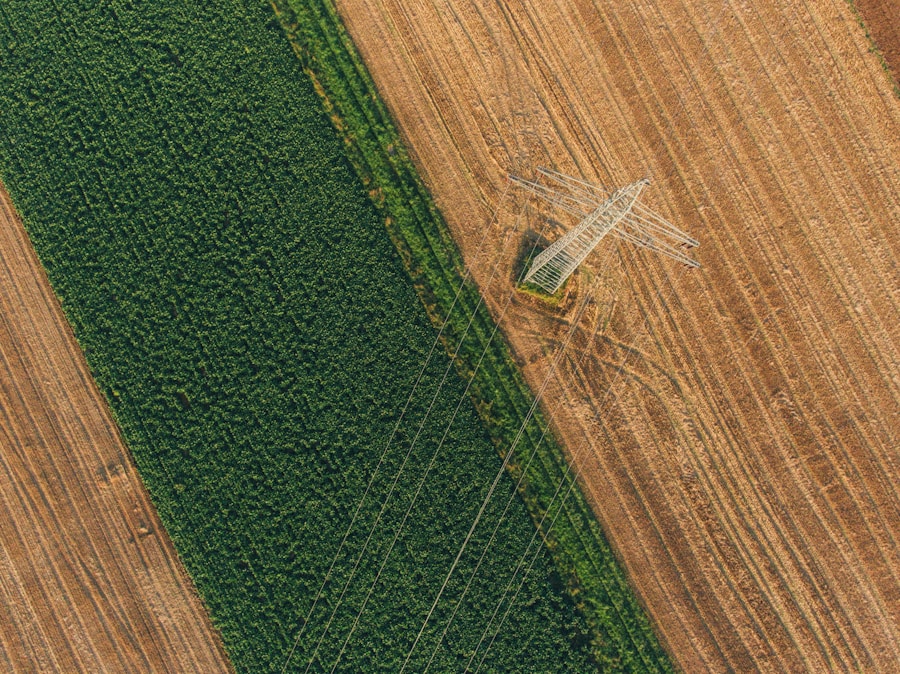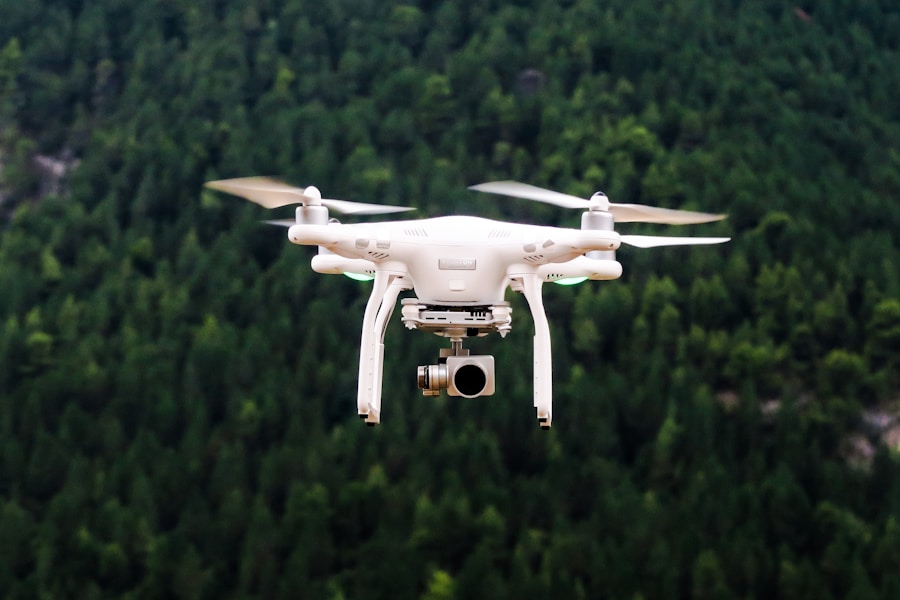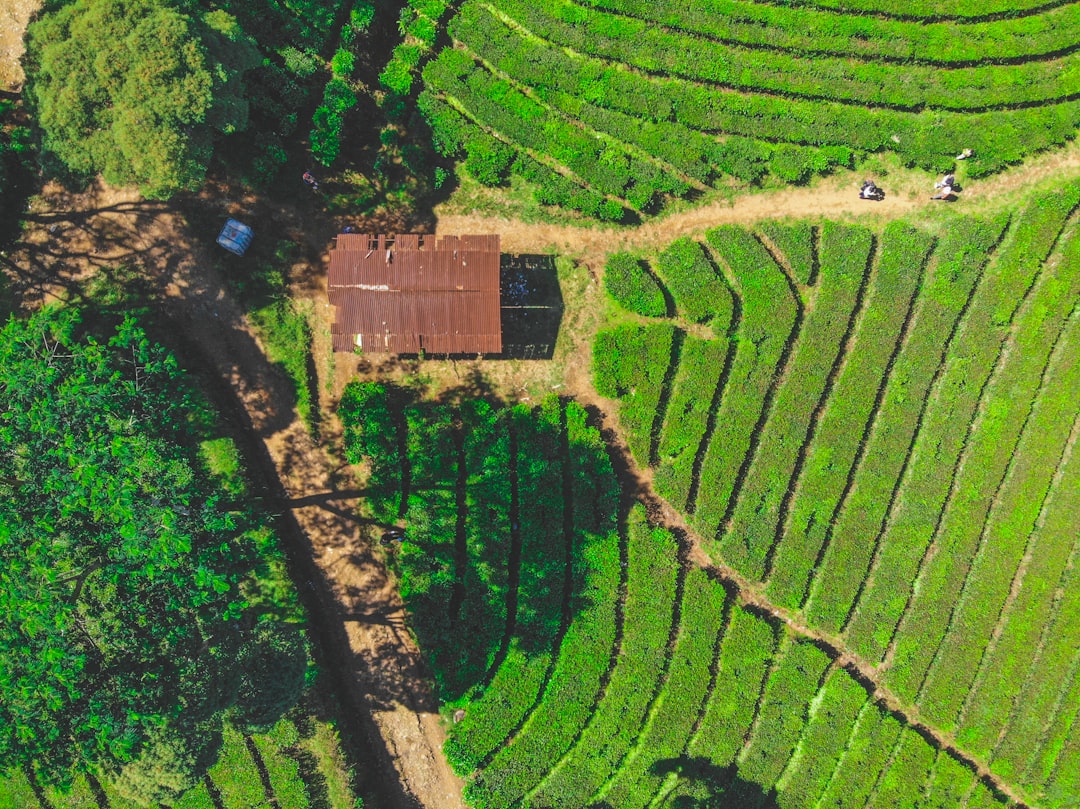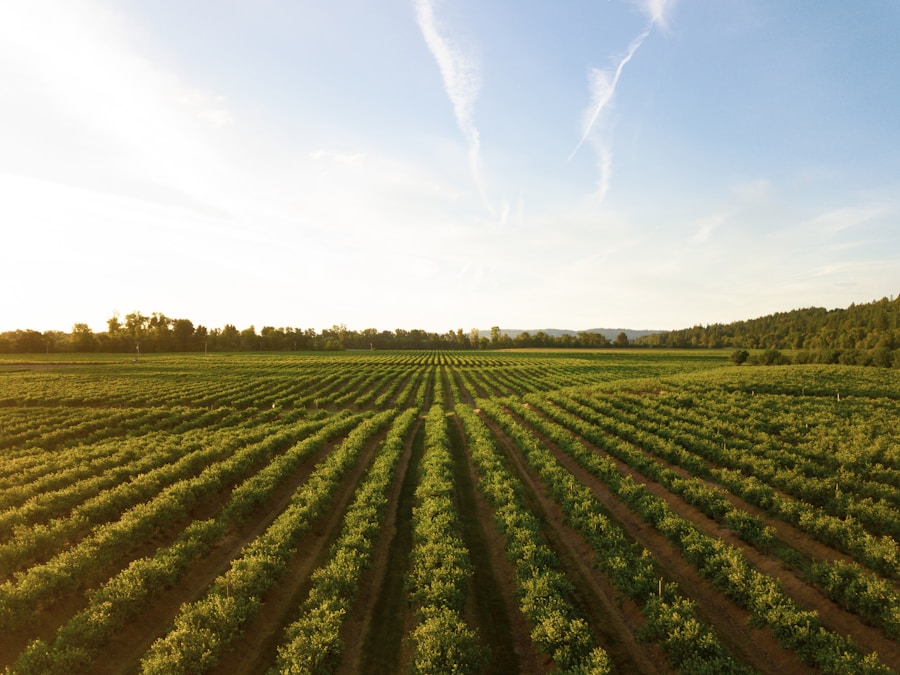Umhlaba wezolimo uqhubeka nokuguqulwa, eqhutshwa ukubaluleka okukhulayo kokulima okunembile kanye nesidingo sobuchwepheshe obuthuthukile ukuze bahlangabezane nezinselelo zokukhiqizwa kwanamuhla kokudla. Ngaphambili kwalesi Revolution kungukunyuka kwama-drones ezolimo, okuveze njengomguquki womdlalo embonini yezolimo. Njengoba inani lomhlaba liqhubeka likhula, Isidingo sokukhiqizwa kokudla okusebenzayo nokuzinzile akukaze kube ngokucindezela ngokwengeziwe. Abalimi manje baphendukela kubuchwepheshe be-Drone ukuze bathuthukise imisebenzi yabo, Vula amazinga amasha wokukhiqiza, futhi uqinisekise ukusebenza kwesikhathi eside kwamapulazi abo.
Ukugcizelelwa okukhulayo kwezolimo ngokunemba kuqokomise isidingo samathuluzi anganikeza okuningiliziwe, Idatha yesikhathi sangempela empilweni yezitshalo, Izimo zenhlabathi, kanye nokusetshenziswa kwezinsiza. Izindlela zendabuko zokuhlonza okwenziwe ngesandla nokubukwa sezize zanda ebusweni bezinkambiso nobunzima bokulima kwanamuhla. Amathambo, Ngamandla abo okuthwebula izithombe eziphezulu ze-aerial kanye nedatha yezinzwa, bangene ekugcwaliseni leli gebe, Ukunikeza abalimi ngokuqonda okungakaze kubonwe ngaphambili emasimini abo futhi kubenze bakwazi ukwenza izinqumo ezinolwazi oluthe xaxa.
Ukuhlanganiswa kobuchwepheshe be-Drone emkhakheni wezolimo kube ngumguquki womdlalo, Ukuguqula indlela abalimi abasondela ngayo imisebenzi yabo. Kusuka ekuqapheni kwezitshalo okuthuthukile kanye nokuqoqwa kwedatha ukuze uthuthukise ukunemba ekuphathweni kwezinsizakusebenza kanye nezinqubo zokuthatha izinqumo ezihlanganisiwe, Ama-Drones asephenduke ithuluzi elisemqoka e-Arsenal yomlimi wanamuhla. Njengoba ubuchwepheshe buqhubeka buvela futhi bufinyeleleke ngokwengeziwe, the potential for drones to transform the future of farming is truly exciting.
Ukuthathwa Key
- Agricultural drones offer numerous benefits for farming, including increased efficiency and precision.
- When choosing an agricultural drone, it’s important to consider factors such as payload capacity, Amakhono enzwane, flight time, and range.
- Durability and weather resistance are crucial features to look for in an agricultural drone, as they need to withstand the elements.
- User-friendly features and automation should be prioritized when selecting a drone to ensure ease of use.
- It’s essential to navigate drone laws and regulations to ensure regulatory compliance when investing in an agricultural drone.
Understanding the Benefits of Drone Technology in Farming
The adoption of drone technology in the agricultural sector has brought about a wealth of benefits that are transforming the way farmers approach their operations. One of the primary advantages of using drones is the improved crop monitoring and data collection capabilities they offer. By equipping drones with high-resolution cameras and specialized sensors, farmers can now obtain detailed, real-time information about the health and condition of their crops, as well as the overall state of their fields. This data can be used to identify potential issues, such as pest infestations or nutrient deficiencies, and enable targeted interventions before they escalate into larger problems.
Ngaphezu kwalokho, drones have significantly enhanced the precision with which farmers can manage their resources, such as water, umanyolo, and pesticides. Ngokufaka imininingwane eqoqwe ngama-drones, Abalimi manje bangasebenzisa lokhu okokufaka ngokunemba okuhlinzayo, Ukuqinisekisa ukuthi asetshenziswa kuphela lapho futhi adingeka khona. Lokhu akuholeli okonga izindleko kodwa futhi kunciphisa umthelela wezemvelo wezenzo zokulima, Ukugqugquzela Ezolimo Ezinzile Nezezimali Ezinobungane.
I-Drones ibuye yaguqula indlela abalimi abaziphatha ngayo i-Field Scouting kanye nokuhlola impilo yezempilo. Esikhundleni sokuncika ekuhlolweni kwesandla, Okungaba isikhathi esidla isikhathi nokusebenza kanzima, Abalimi manje bangathumela ama-drones ukuze bahlole amasimu abo, Ukuhlonza Izindawo Zezinkinga nokubheka isimo sonke sezilimo zabo. Le ndlela ehlelwe kabusha ensimini Scouting inikeze amandla abalimi ukwenza izinqumo ezinolwazi ngokwengeziwe, ukunxusa imisebenzi yabo futhi kwandise izivuno zabo.
Ukuhlanganiswa kobuchwepheshe be-Drone ekulimaleni nakho kube nomthelela omkhulu ezinhlelweni zokuthatha izinqumo zabalimi. Ngokubanika ngengcebo yedatha kanye nokuqonda kwangempela kwesikhathi, Ama-Drones anikeze abalimi abanikezwe amandla okwenza izinqumo ezinolwazi ngokwengeziwe nezinqumo, Noma ngabe kunqume isikhathi esifanele sokutshala, ukuvuma, noma ukusebenzisa okokufaka okuthile. Le ndlela eqhutshwa idatha yokulima inamandla okukhulisa umkhiqizo, Yehlisa imfucuza, futhi uthuthukise inzuzo ephelele yemisebenzi yezolimo.
Izici ezibalulekile okufanele ucabangele lapho ukhetha i-Drone yezolimo
Njengoba ukwamukelwa kwe-Drone Technology emkhakheni wezolimo kuyaqhubeka ukukhula, Abalimi babhekene nenselelo yokukhetha i-Drone efanele ngezidingo zabo ezithile. Identifying the unique requirements of your farming operation is the first crucial step in this decision-making process. Whether you’re focused on precision crop monitoring, efficient resource management, or comprehensive field scouting, understanding your specific needs will help you narrow down the available options and find the drone that best suits your farming goals.
Once you have a clear understanding of your requirements, it’s essential to explore the various drone models and their capabilities. From entry-level drones with basic features to advanced, high-performance models, the market offers a wide range of options. It’s important to carefully evaluate the specifications of each drone, including its payload capacity, Amakhono enzwane, flight time, and range, to ensure that it aligns with your farming needs.
Balancing cost, performance, Futhi ukuqina kungenye into ebalulekile okufanele uyicabangele lapho ukhetha i-drone yezolimo. Ngenkathi kungahle kulingeze ukukhetha okukhethwa kukho okungabizi kakhulu, Kubalulekile ukukala izinzuzo zesikhathi eside kanye nokonga izindleko ezingaba khona ukuthi i-Drone ye-Drone enempilo enamandla kakhulu futhi eqinile. Ukutshala imali kwi-drone esezingeni eliphakeme engamelana nobunzima bokusebenza kwezolimo futhi ukuletha okungaguquki, Ukusebenza okuthembekile ekugcineni kungaholela ekusebenzeni kahle nasekusebenzeni kwezindleko ngokuhamba kwesikhathi.
Ekugcineni, Kubalulekile ukucubungula ukulungiswa kwesikhathi eside kanye nezidingo zokusekelwa ze-drone oyikhethayo. Izindawo zokulima zingaba nzima, Ngokuchayeka ezimweni zezulu ezahlukahlukene, uthuli, nezinye izinto zemvelo. Ukuqinisekisa ukuthi i-Drone oyikhethile ixhaswe yinethiwekhi yokusekelwa okunamandla futhi izingxenye ezitholakala kalula zingasiza ukunciphisa isikhathi sokuphumula futhi kuqinisekiswe isikhathi eside sokutshalwa kwemali kwakho.
Amandla okulayisha namakhono enzwane: Ukuqondanisa izici ze-Drone ezidingweni zakho zokulima
Uma kukhulunywa ngokukhetha i-Drone yezolimo efanele, Amandla okulayisha namakhono enzwane ukucatshangelwa okubalulekile. Umthamo wokulayisha we-drone ubhekisa esisindo esiphezulu esingathwala, okubandakanya i-drone uqobo, ikhamera noma inzwa ekhokhelwa, nanoma yimiphi imishini eyengeziwe noma izesekeli. Ukuhlola amandla okulayisha kubalulekile, Njengoba izonquma izinhlobo zezinzwa neminye imishini ongayihlanganisa kwi-drone yakho, which in turn will impact the data collection and analysis capabilities of your farming operations.
The range of sensors available for agricultural drones is constantly expanding, offering farmers a wealth of options to choose from. From multispectral cameras that can detect subtle changes in plant health to thermal sensors that can identify areas of stress or disease, the sensor capabilities of modern drones are truly impressive. Assessing the specific data collection and analysis needs of your farm is crucial in determining the types of sensors that will be most beneficial for your operations.
Ensuring that the drone’s capabilities align with your precision agriculture goals is paramount. Ngokwesibonelo, if you require detailed, Izithombe eziphakeme kakhulu zokuqapha ukukhula kwezilimo futhi zikhombe izindawo eziyinkinga, Ungadinga i-Drone efakwe ikhamera ephezulu ye-megapixel noma inzwa ekhethekile ye-multispectral. Ngokuqondile, Uma ukugxila kwakho ekuphathweni kwezinsiza kusebenza kahle, I-Drone enamakhono okucabanga okushisayo angafaneleka kakhulu, Njengoba kungakusiza ekuboneni izindawo zokuxineka kwamanzi noma ukufaka umanyolo ongalingani.
Ngokuhlola ngokucophelela umthamo wokulayisha kanye nezinzwa zezinzwa zamamodeli we-drone ahlukile, Ungaqinisekisa ukuthi i-Drone oyikhethile ihambisana nezidingo ezithile zokusebenza kwakho kokulima. Lokhu kuqondanisa phakathi kwezici ze-Drone kanye nezinhloso zakho zezolimo ezinembile kuzokunika amandla ukukhulisa izinzuzo ze-Drone Technology futhi waziswe ngokwengeziwe, Izinqumo eziqhutshwa ngedatha ezingaholela ekukhiqizweni okuphezulu, cost savings, and sustainable farming practices.
Flight Time and Range: Ensuring Optimal Coverage for Your Farm
| Imodeli ye-Drone | Isikhathi sendiza | Max Payload Capacity | Ukulungiswa kwekhamera | Range |
|---|---|---|---|---|
| Model a | 60 imizuzu | 5 kg | 20 I-nke | 5 k |
| Imodeli b | 45 imizuzu | 3 kg | 24 I-nke | 3 k |
| Imodeli c | 75 imizuzu | 7 kg | 16 I-nke | 7 k |
One of the critical factors to consider when selecting an agricultural drone is the flight time and range capabilities. These attributes directly impact the drone’s ability to efficiently cover the entirety of your farm, ensuring that you can collect comprehensive data and effectively monitor your fields.
The importance of flight time and range cannot be overstated, as they directly influence the drone’s operational efficiency and the overall coverage of your farming operations. Longer flight times and greater ranges allow you to survey larger areas without the need for frequent battery changes or landing and takeoff cycles, ultimately saving time and increasing the productivity of your drone-based activities.
When evaluating different drone models, it’s essential to consider the specific size and layout of your farm. Larger farms or those with complex terrain may require drones with extended flight times and longer ranges to ensure complete coverage and data collection. Ngokuqondile, smaller farms or those with more manageable layouts may be better suited to drones with shorter flight times but more frequent battery swaps or recharging capabilities.
Exploring options for extended flight time, such as swappable batteries or hybrid power systems, can be a game-changer for farmers who need to maximize their drone’s operational capabilities. These advanced features can significantly increase the drone’s endurance, allowing you to cover more ground and gather more comprehensive data without interruptions.
By carefully considering the flight time and range requirements of your farm, you can select a drone that is optimized for your specific needs, ensuring that you can effectively leverage the power of drone technology to enhance your precision agriculture efforts and drive your farming operations to new levels of efficiency and productivity.
Durability and Weather Resistance: Choosing a Drone Built for the Elements
When selecting an agricultural drone, it’s crucial to consider the durability and weather resistance of the device, as farming environments can be harsh and unforgiving. Drones operating in these conditions must be able to withstand a variety of environmental factors, from strong winds and heavy rain to dust and debris, to ensure reliable and consistent performance.
Evaluating the drone’s construction and materials is a key aspect of assessing its durability. Drones built with high-quality, rugged components are more likely to withstand the rigors of farming operations and maintain their integrity over time. This includes factors such as the drone’s frame, propellers, and other critical components that must be able to withstand the stresses of frequent use and exposure to the elements.
In addition to the drone’s physical construction, it’s essential to consider its ability to operate reliably in the specific climate and weather patterns of your farm. Drones that are designed to withstand the unique environmental conditions of your region, whether it’s extreme temperatures, high humidity, or frequent storms, will be better equipped to perform consistently and minimize the risk of downtime or equipment failure.
The availability of replacement parts and maintenance support is another important consideration when it comes to the durability and weather resistance of your agricultural drone. Ukuqinisekisa ukuthi uyakwazi ukufinyelela ezingxenyeni ezidingekayo zokuphumula nokuthi umenzi we-drone noma umhlinzeki wesevisi unikeza izinsizakalo zokulungiswa kanye nokulungisa kungakusiza ugcine ukusebenza kwesikhathi eside kokutshala imali yakho futhi unciphise noma yiziphi izingqinamba ezingalindelekile noma ukwephula umthetho.
Ngokuhlola ngokucophelela ukuqina nokumelana nesimo sezulu kwamamodeli ahlukile we-drone, Ungakhetha idivaysi elungele kahle izimfuno zokusebenza kwakho kokulima, Ukuqinisekisa ukuthi ukutshalwa kwezimali kwakho ku-Drone Technology Kunikezela kancane, ukusebenza okuthembekile futhi kwandisa izinzuzo zezolimo ngokunemba.
Ukusebenziseka kalula kanye ne-automation: Ukubeka phambili izici ezisebenziseka kalula
Njengoba ukwamukelwa kwe-Drone Technology emkhakheni wezolimo kuyaqhubeka ukukhula, Ukulula kokusetshenziswa kanye nezici ezizenzakalelayo zalawa madivayisi sekube ukucatshangelwa okubaluleke kakhulu kwabalimi. Ngemva kwakho konke, the success of integrating drones into farming operations relies heavily on the ability of the operators to effectively and efficiently utilize the technology.
Evaluating the drone’s control system and user interface is a crucial step in the selection process. Drones with intuitive, user-friendly controls and clear, informative displays can significantly reduce the learning curve for operators, enabling them to quickly master the device’s capabilities and seamlessly incorporate it into their daily farming routines.
In addition to the control system, the availability of autonomous or semi-autonomous flight modes can be a game-changer for farmers. These advanced features, such as pre-programmed flight paths, automated waypoint navigation, and intelligent obstacle avoidance, can greatly simplify the drone’s operation and reduce the workload on the pilot, allowing them to focus on other critical tasks.
The learning curve and training requirements for your farm’s operators are also essential factors to consider. Drones with more complex features or advanced functionalities may require more extensive training and familiarization, which can impact the overall adoption and integration of the technology within your farming operation. Selecting a drone that strikes the right balance between advanced capabilities and user-friendliness can help ensure a smooth transition and maximize the benefits of drone technology for your farm.
Ekugcineni, the integration of drone technology with farm management software and data analysis tools can further enhance the ease of use and automation capabilities. By seamlessly integrating the drone’s data with your existing farm management systems, you can streamline the data collection and analysis processes, enabling you to make more informed, data-driven decisions that drive the success of your precision agriculture efforts.
Regulatory Compliance: Navigating Drone Laws and Regulations
As the use of drones in the agricultural sector continues to grow, it is essential for farmers to navigate the complex landscape of drone laws and regulations. Ensuring compliance with local, regional, Futhi imihlahlandlela kazwelonke akuyona nje into engokomthetho kodwa futhi iyisici esibucayi ekuhlanganiseni okuphephile futhi okunomthwalo wemfanelo wobuchwepheshe be-Drone ekusebenzeni kwezolimo.
Ukuqonda imithethonqubo ethile elawula ukusetshenziswa kwe-drone kwezolimo kuyisinyathelo sokuqala kule nqubo. Izici ezinjengemikhawulo ye-AirSpace, Izidingo Zokuthola Ilayisense Yezindiza, Futhi imihlahlandlela yokusebenza ingahluka kakhulu ngokuya ngendawo kanye namandla epulazini lakho. Ukuhlala unolwazi nganoma yikuphi ukuvuselelwa noma izinguquko kule mithetho kubalulekile, njengoba ubuchwepheshe bezomthetho obusezingeni eliphakeme le-Drone Technology buhlala buvela.
Ukukhetha imodeli ye-Drone ehambisana nemihlahlandlela efanelekile yokuphepha nokusebenza kubaluleke kakhulu. Lokhu kufaka phakathi izici ezinjenge-geofencing eyakhelwe ngaphakathi, imisebenzi ezenzakalelayo yokubuyela ekhaya, and compliance with weight and size restrictions. By choosing a drone that is designed to operate within the established regulatory framework, you can minimize the risk of legal issues or safety concerns and ensure the seamless integration of the technology into your farming practices.
In addition to the drone itself, the licensing and certification requirements for drone pilots must also be taken into consideration. Depending on the specific regulations in your area, your farm’s operators may need to obtain specialized training and certifications to legally operate the drone. Investing in this training and ensuring that your pilots are properly licensed can help you avoid potential legal complications and maintain the highest standards of safety and professionalism.
By staying informed about the regulatory landscape and selecting a drone that is compliant with the relevant laws and guidelines, farmers can navigate the complexities of drone technology with confidence and ensure the long-term success of their precision agriculture efforts. Embracing a proactive and responsible approach to drone integration can not only protect your farm but also contribute to the responsible development of this transformative technology within the agricultural sector.
Investing in the Right Agricultural Drone for Your Farm’s Success
As the agricultural industry continues to evolve, the integration of drone technology has become a critical component of modern farming operations. The rise of agricultural drones has ushered in a new era of precision agriculture, empowering farmers with unprecedented levels of data, ikhono lokwenza, and decision-making capabilities.
Throughout this article, we have explored the key considerations and decision-making process involved in selecting the right agricultural drone for your farm. From understanding the benefits of drone technology and evaluating the specific needs of your farming operation to assessing factors such as payload capacity, Amakhono enzwane, flight time, and regulatory compliance, the selection of the appropriate drone is a multifaceted and strategic endeavor.
By thoroughly researching and evaluating the available options, farmers can find the agricultural drone that best aligns with their precision agriculture goals and the unique characteristics of their farm. Investing in the right drone can unlock a wealth of benefits, including improved crop monitoring, enhanced resource management, streamlined decision-making, and increased overall productivity and profitability.
Njengoba ubuchwepheshe buqhubeka buvela futhi bufinyeleleke ngokwengeziwe, the potential for drones to transform the future of farming is truly exciting. By embracing this transformative tool and incorporating it into their operations, farmers can position themselves at the forefront of the precision agriculture revolution, driving their farms to new levels of success and sustainability.
The decision to invest in an agricultural drone is not one to be taken lightly, but the long-term advantages it can bring to your farming operations are undeniable. By carefully considering the factors outlined in this article and making an informed choice, you can unlock the full potential of drone technology and secure the future prosperity of your farm.
Amazolumbo
What is an agricultural drone?
An agricultural drone, also known as a farming drone or ag drone, is an unmanned aerial vehicle (UAV) specifically designed for use in agriculture. These drones are equipped with various sensors and cameras to collect data and imagery for monitoring crops, imfuko, and land.
Yini izinzuzo zokusebenzisa ama-drones ezolimo?
Agricultural drones offer several benefits to farmers, including the ability to monitor crop health, assess field conditions, optimize irrigation and fertilization, and detect pest infestations. Drones can also help farmers save time and resources by providing efficient and accurate data for decision-making.
What factors should be considered when choosing an agricultural drone?
When choosing an agricultural drone, farmers should consider factors such as flight time, umthamo wokulayisha, camera quality, Amakhono enzwane, software compatibility, futhi kulula ukusetshenziswa. Ngaphezu kwalokho, the size of the farm, specific agricultural needs, and budget should also be taken into account.
What are the different types of sensors used in agricultural drones?
Agricultural drones can be equipped with various sensors, including multispectral, hyperspectral, thermal, and LiDAR sensors. These sensors enable the drones to capture different types of data related to crop health, soil moisture, temperature variations, and terrain mapping.
Are there any regulations or restrictions for using agricultural drones?
Emazweni amaningi, there are regulations and restrictions for using agricultural drones, including obtaining proper certifications, adhering to flight altitude limits, and respecting privacy laws. It is important for farmers to be aware of and comply with these regulations when using drones for agricultural purposes.








